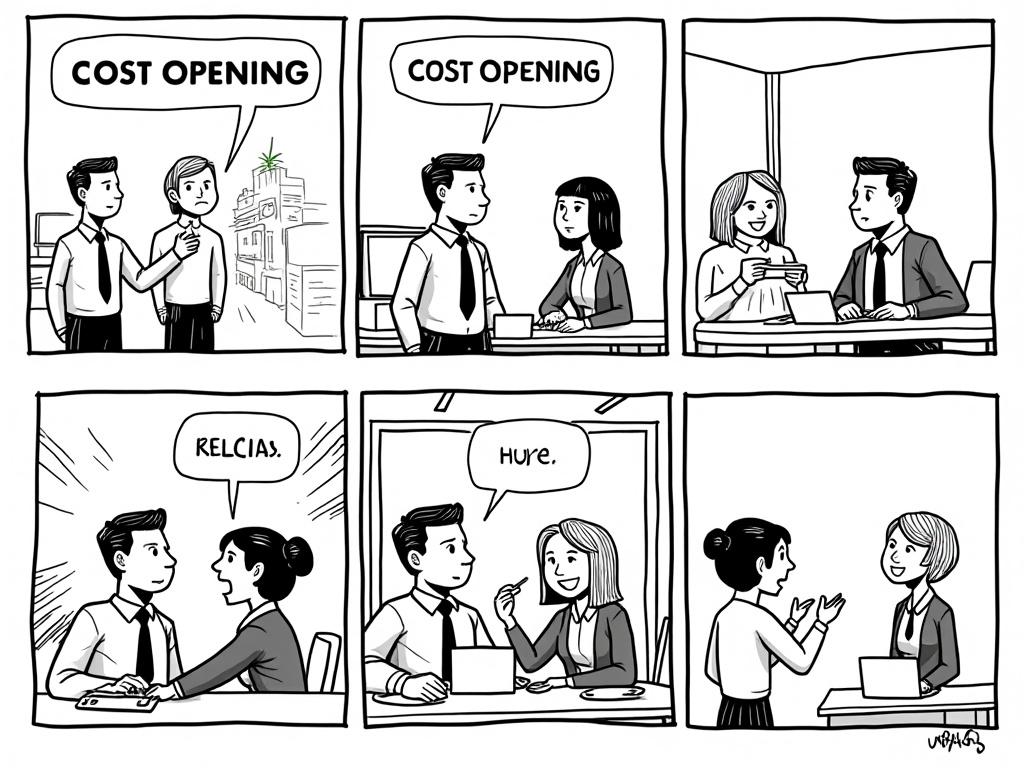
JAFZA vs Dubai South vs DAFZA: Which Free Zone is Best for Logistics and Trade?
Reading time: 12 minutes
Ever stood at the crossroads of choosing the perfect UAE free zone for your logistics operation? You’re not alone. With over 45 free zones across the UAE, picking the right one can feel like navigating a maze blindfolded. Let’s cut through the complexity and focus on three powerhouses that dominate the logistics landscape: JAFZA, Dubai South, and DAFZA.
Key Decision Factors:
- Strategic location advantages
- Infrastructure capabilities
- Cost-effectiveness analysis
- Regulatory frameworks
Well, here’s the straight talk: The “best” free zone isn’t a one-size-fits-all answer—it’s about strategic alignment with your business objectives.
Quick Scenario: Imagine you’re launching a regional distribution hub. Should you prioritize proximity to the world’s busiest port, cutting-edge aviation infrastructure, or established trade networks? Let’s dive deep and transform this decision into your competitive advantage.
Table of Contents
- Free Zone Landscape Overview
- JAFZA: The Maritime Giant
- Dubai South: The Aviation Hub
- DAFZA: The Established Player
- Head-to-Head Comparison
- Strategic Selection Framework
- Your Strategic Roadmap
- Frequently Asked Questions
Free Zone Landscape Overview
The UAE’s free zone ecosystem processes over $350 billion in trade annually, representing roughly 85% of the country’s total trade volume. These zones aren’t just administrative conveniences—they’re strategic economic engines designed to attract global businesses through compelling value propositions.
Each free zone operates under specific mandates: JAFZA leverages Dubai’s position as a global maritime hub, Dubai South capitalizes on aviation and logistics synergies, while DAFZA focuses on comprehensive trade facilitation across multiple sectors.
Why Location Matters More Than Ever
In today’s hyper-connected supply chain environment, your free zone choice directly impacts operational efficiency. A 2023 study by Dubai Chamber of Commerce revealed that companies in strategically located free zones achieve 23% faster cargo processing times compared to those in less optimized locations.
Consider this real-world example: A European electronics distributor choosing between these three zones discovered that JAFZA’s proximity to Jebel Ali Port reduced their container dwell time by 18 hours, translating to $45,000 in annual savings on a moderate-volume operation.
JAFZA: The Maritime Giant
Jebel Ali Free Zone Authority (JAFZA) stands as the Middle East’s largest free zone, hosting over 7,000 companies across 20 sectors. Its crown jewel? Direct access to Jebel Ali Port, the world’s 9th busiest container port handling 15.3 million TEUs annually.
Strategic Advantages
Port Integration: JAFZA offers seamless connectivity to Jebel Ali Port, eliminating the traditional challenges of moving goods between free zones and ports. This integration reduces logistics costs by an estimated 15-20% for import/export operations.
Infrastructure Scale: Spanning 57 square kilometers, JAFZA provides extensive warehousing options from 100 square meters to massive 50,000+ square meter facilities. The zone features dedicated logistics districts with specialized infrastructure for different cargo types.
Established Networks: With four decades of operation, JAFZA has cultivated robust business ecosystems. Companies benefit from established supplier networks, service providers, and collaborative opportunities that newer zones struggle to replicate.
Cost Considerations
JAFZA’s premium location comes with premium pricing. Office space averages AED 45-65 per square foot annually, while warehouse facilities range from AED 25-40 per square foot. However, the operational efficiencies often justify the higher costs for volume-intensive operations.
Dubai South: The Aviation Hub
Dubai South emerged as the UAE’s newest logistics powerhouse, strategically positioned around Al Maktoum International Airport. This zone represents Dubai’s vision for future-ready logistics infrastructure, emphasizing aviation-centric trade facilitation.
Next-Generation Infrastructure
Aviation Connectivity: Dubai South’s proximity to Al Maktoum International Airport provides unparalleled air cargo capabilities. The airport’s planned expansion to handle 200 million passengers and 12 million tons of cargo annually positions Dubai South for explosive growth.
Integrated Logistics: The zone features purpose-built logistics facilities with automated cargo handling systems, temperature-controlled storage, and direct airside access. These capabilities particularly benefit high-value, time-sensitive shipments.
Competitive Pricing: As the newest entrant, Dubai South offers attractive pricing to build market share. Office space averages AED 35-50 per square foot, with warehouses at AED 20-30 per square foot—representing 20-25% savings compared to JAFZA.
Growth Trajectory
Dubai South’s rapid expansion tells a compelling story. From 50 companies in 2018 to over 1,200 today, the zone demonstrates remarkable growth momentum. Industry analysts predict a 40% annual growth rate through 2026, driven by aviation sector expansion and e-commerce demands.
DAFZA: The Established Player
Dubai Airport Free Zone Authority (DAFZA) occupies a unique position, leveraging Dubai International Airport’s status as the world’s busiest international airport. With over 1,700 companies, DAFZA balances aviation advantages with diverse sector representation.
Strategic Positioning
Airport Proximity: DAFZA’s location adjacent to Dubai International Airport provides immediate access to global flight networks. This proximity proves invaluable for businesses requiring rapid international connectivity.
Sector Diversification: Unlike purely logistics-focused zones, DAFZA accommodates diverse industries including technology, pharmaceuticals, and professional services. This diversity creates cross-sector collaboration opportunities.
Established Reputation: Operating since 1996, DAFZA has built strong regulatory frameworks and service delivery capabilities. Companies benefit from streamlined processes refined over decades of operation.
Operational Realities
DAFZA’s central location creates both advantages and challenges. While connectivity remains excellent, space constraints limit expansion possibilities. Warehouse availability becomes increasingly scarce, with premium locations commanding AED 50-70 per square foot.
Head-to-Head Comparison
Here’s how these three logistics giants stack up across critical decision factors:
| Factor | JAFZA | Dubai South | DAFZA |
|---|---|---|---|
| Primary Advantage | Port Integration | Aviation Focus | Airport Proximity |
| Cost Level | Premium | Competitive | High |
| Infrastructure Age | Mature | Modern | Established |
| Cargo Volume Capacity | Very High | High | Medium |
| Growth Potential | Steady | Rapid | Limited |
Performance Metrics Visualization
Based on 2023 performance data, here’s how each zone performs across key logistics indicators:
Cargo Processing Speed (Days)
Strategic Selection Framework
Choosing the right free zone requires systematic evaluation of your specific business requirements. Here’s a proven framework used by successful logistics companies:
Step 1: Define Your Primary Operations
Sea-Freight Dominant: If your operation relies heavily on container imports/exports, JAFZA’s port integration provides unmatched efficiency. Companies handling 500+ TEUs annually typically see 15-20% cost savings.
Air-Cargo Focused: For high-value, time-sensitive shipments, Dubai South’s aviation infrastructure offers superior capabilities. E-commerce fulfillment centers and pharmaceutical distributors particularly benefit from air cargo proximity.
Multi-Modal Requirements: Mixed operations requiring both sea and air capabilities should evaluate DAFZA’s balanced connectivity or consider dual-zone strategies.
Step 2: Assess Growth Projections
Your five-year growth trajectory significantly impacts zone selection. JAFZA suits established operations with predictable growth, while Dubai South accommodates rapid expansion with flexible infrastructure options.
A compelling case study: A Turkish textile distributor initially chose DAFZA for its established network benefits. However, after experiencing 300% growth in three years, they relocated to Dubai South for expansion capacity and cost optimization, reducing operational costs by 28%.
Step 3: Calculate Total Cost of Operations
Beyond rental costs, consider comprehensive operational expenses including labor, utilities, logistics, and regulatory compliance. JAFZA’s higher rents often offset by operational efficiencies, while Dubai South’s competitive pricing supports margin optimization.
Your Strategic Roadmap
Ready to transform this complex decision into competitive advantage? Here’s your action-oriented roadmap for success:
Immediate Actions (Next 30 Days)
1. Conduct Operational Audit: Map your current logistics flows, identifying primary cargo types, volumes, and geographic distribution patterns. This baseline assessment reveals which free zone capabilities align with your operational reality.
2. Engage Zone Representatives: Schedule consultations with all three zones. Prepare specific questions about infrastructure capabilities, regulatory requirements, and expansion possibilities. Request detailed cost breakdowns including hidden fees.
3. Visit Facilities: Physical site visits reveal operational realities that brochures can’t convey. Assess warehouse quality, transportation connectivity, and surrounding business ecosystems.
Strategic Planning (Next 90 Days)
4. Develop Financial Models: Create comprehensive 5-year cost projections for each zone, including setup costs, operational expenses, and scalability investments. Factor in potential business growth scenarios.
5. Regulatory Deep Dive: Understanding each zone’s specific compliance requirements, licensing procedures, and operational restrictions. Some zones offer advantages for specific industry sectors or business structures.
The logistics landscape continues evolving rapidly, with AI-driven automation, sustainability mandates, and e-commerce growth reshaping operational requirements. Your chosen free zone should not only meet today’s needs but position you for tomorrow’s opportunities.
Are you ready to leverage these insights and transform your logistics operation into a regional powerhouse? Remember, the best free zone decision isn’t about finding the perfect option—it’s about aligning strategic advantages with your unique business trajectory and growth ambitions.
Frequently Asked Questions
Can I easily relocate between free zones if my business needs change?
Yes, but relocation involves significant planning and costs. You’ll need to surrender your current license, transfer assets, and obtain new permits. The process typically takes 3-6 months and costs 15-25% of your annual operational budget. Dubai South offers the most flexible relocation policies, while JAFZA provides strong incentives for companies expanding within their zone.
Which free zone offers the best support for small and medium enterprises?
Dubai South currently provides the most SME-friendly environment with flexible space options, competitive pricing, and dedicated support programs. They offer shared warehouse facilities starting from 50 square meters and provide business incubation services. DAFZA also supports SMEs through its Business Connect program, while JAFZA focuses primarily on larger enterprises.
How do visa and employment regulations differ between these zones?
All three zones operate under similar UAE employment laws, but offer different visa allocation ratios. JAFZA provides 1 visa per 500 square feet of office space, DAFZA offers 1 visa per 250 square feet, and Dubai South provides the most flexible visa policies with 1 visa per 100 square feet. Each zone also offers different categories of employment visas, with Dubai South providing the most comprehensive options for diverse skill levels.

Article reviewed by Daniel Costa, Agribusiness Analyst | Studying UAE-Brazil Trade Flows, on July 15, 2025
